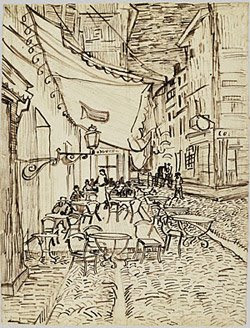Curator Jessica Morgan, of the Tate Modern, writes about the big ideas driving art now, and I have to say I concur with her. I, myself, am very interested in Modernism, but worry that it's old stuff. I ask myself if my art is too much like Modern Art, then is it adding anything to the whole? Do I even care?
The economic downturn has me thinking that a grand opportunity is here for artists to retreat and see if there is an art within them that is less market oriented. What kind of art would I make if there were no chance to sell it?
Morgan writes:
In a curatorial sense, I am fascinated that few exhibitions try to take on really big issues. I think there is a certain amount of fear in the idea of taking them on. One result is that people look to the past. There has been a tendency to revert to the early stages of modernism. It was a point of utopian hope, experimentation and bold ideas of political change.
There has also been a type of artwork that allows the audience to create or complete it. I’m thinking of artists such as Carsten Höller, who made the slides at Tate Modern, or Dominique Gonzalez-Foerster [whose current show is in Tate Modern’s Turbine Hall]. They take on the role of curator and to some extent allow the curator to be an artist.
The economic shift will affect the art world. One of the things I hope may fall by the wayside is the type of fashionable production created by the market. We’d all be better off without quite so many galleries and useless publications.
Thanks, Katherine, for taking me to this article.
Addendum. Again, indebted to Katherine Tyrrell. I found Edward Winkleman's articles (Part 1, and Part 2) reflecting some of my thoughts about how artists and collectors might proceed in tough times. I have been thinking about the behavior of American artist during the Great Depression. We are very far from the economic realities of the thirties, but some of the templates from that time come to mind. Pre-selling art, long term views about collecting and strategies like that crossed my mind, too.



























